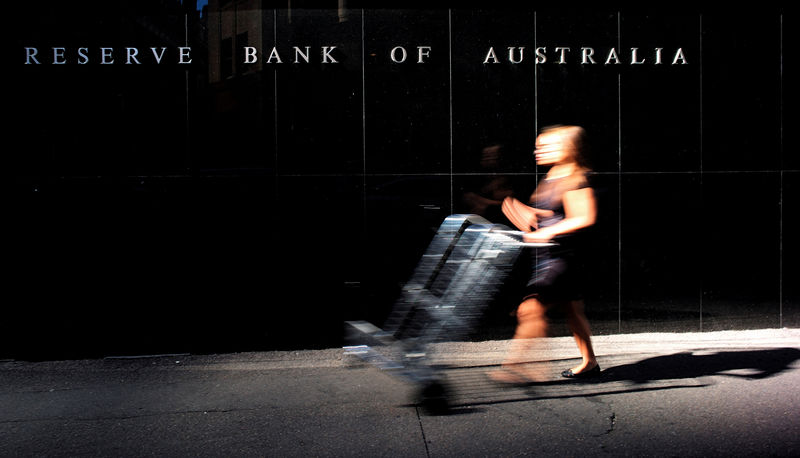By Swati Pandey
SYDNEY (Reuters) - Australia's central bank is widely expected to cut its benchmark cash rate two more times this year to an unprecedented 0.75% in a bid to boost growth and inflation.
Nearly 70% of 40 economists surveyed this week, including those from the country's biggest banks, expect the Reserve Bank of Australia (RBA) to cut the cash rate to a record low 1.00% at its monthly meeting on Tuesday.
And a slim majority, or 20 of 38 surveyed, see the chance of another cut to 0.75% by year-end. As many as three are predicting the cash rate at 0.50% while only 15 see the central bank holding at 1.00%.
That is a significant shift from the previous poll in late May, when most economists predicted the RBA would pause at 1.00%.
"The key driver of future rate cuts appears to be the unemployment rate, or more specifically, the degree of spare capacity in the labor market and economy," said UBS chief economist George Tharenou who sees two more RBA cuts.
Employment is rising at 2.6% a year, even as annual gross domestic product growth slows to under 2%. But that brisk pace is still not enough to push the jobless rate lower.
The RBA expects the economy to start generating wage pressures only when unemployment falls to or below 4.5% from 5.2% now.
(Graphic: Australia's jobless rate not low enough to stoke wage growth, inflation - https://tmsnrt.rs/2FB9n53)
In light of those expectations, economists believe the RBA will need to do more.
"With the domestic and global economic environment likely to remain soft, we would expect the market to continue to debate eventual further rate cuts, the effective zero lower bound and possible unconventional monetary measures," said Morgan Stanley (NYSE:MS) economist Chris Read.
The RBA - which has a reputation of being a "reluctant rate-cutter" - eased policy for the first time in nearly three years to 1.25% just this month, joining a bevy of global central banks who are either already easing or have signaled plans to do so soon.
Australia's shift came as recent data painted a sullen picture of the $1.3 trillion economy with growth slowing, property prices tumbling, household spending weakening, wages stagnant and inflation lukewarm.

(Graphic: Benchmark rates in developed world - https://tmsnrt.rs/2ZKpJzC)